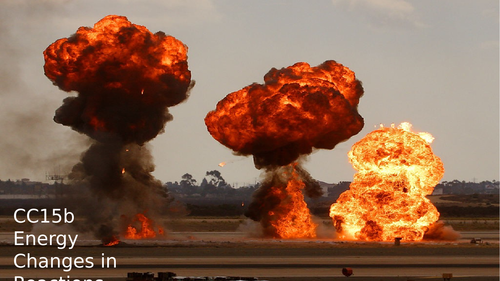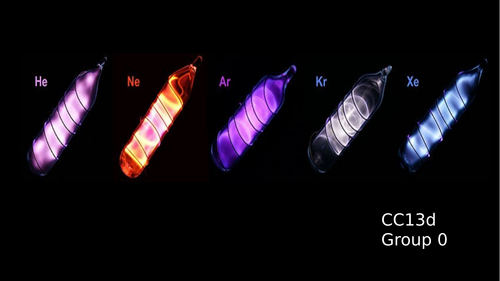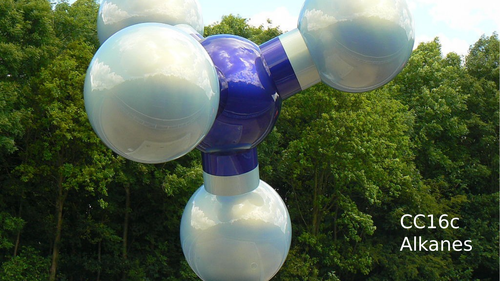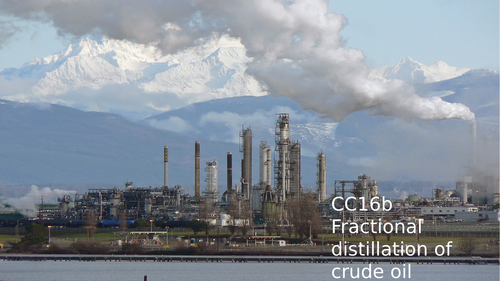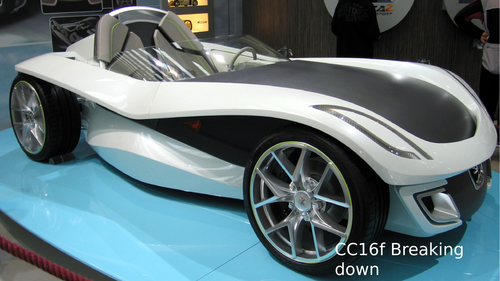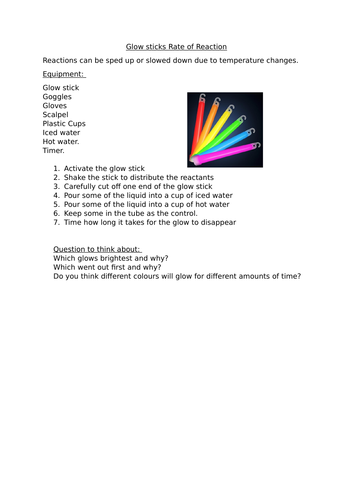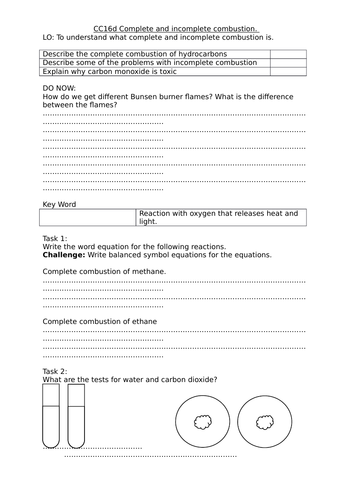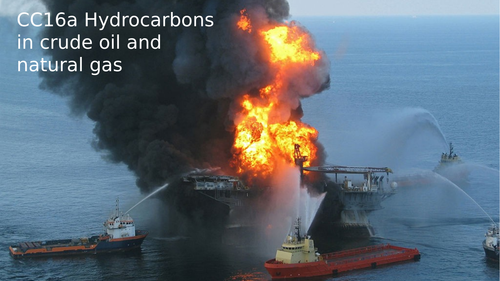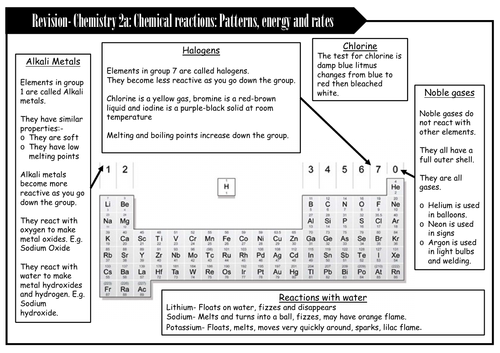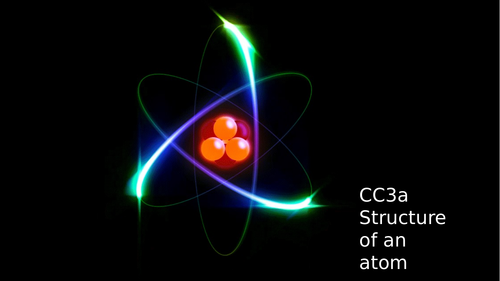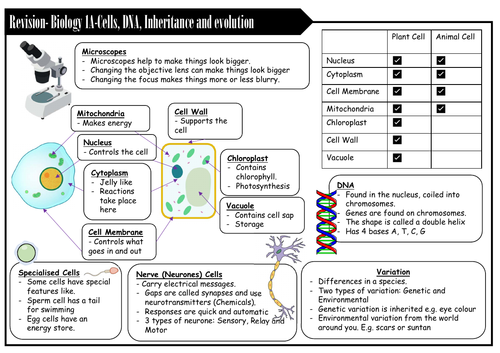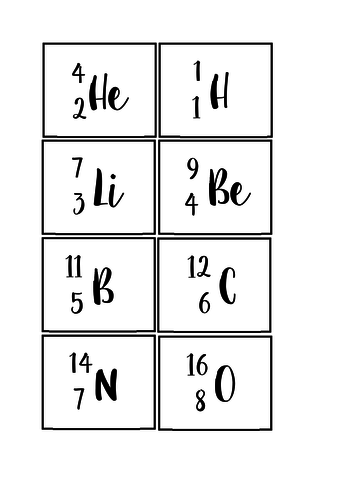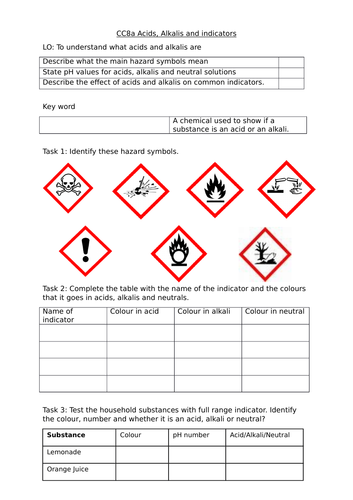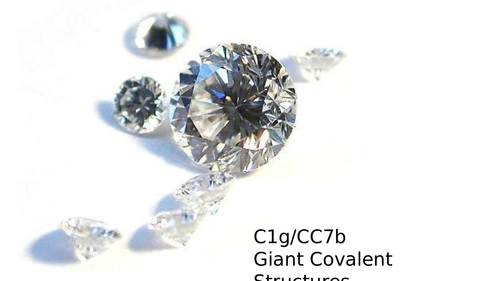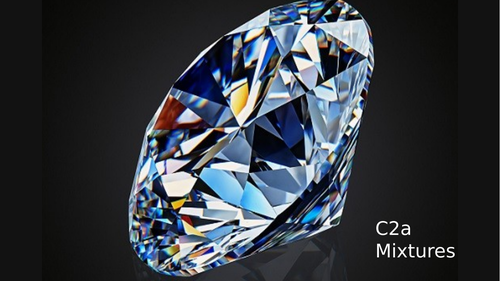127Uploads
56k+Views
16k+Downloads
Chemistry

CC15b Energy Changes in Reactions
Follows Edexcel 9-1 Combined Science GCSE
PowerPoint about Energy changes in reactions, looks at bond energies and reaction profiles
Easily adapted for more able students.

CC13d Group 0- The Noble gases
Follows Edexcel 9-1 Combined Science GCSE
PowerPoint about Group 0 The noble gases, their properties and uses.
Includes some activities for lower ability students to identify trends in properties.
Easily adapted for more able students.

CC16c Alkane homologous series
Follows Edexcel 9-1 Combined Science GCSE PowerPoint about alkanes, alkenes and alcohols. Including activity building structures using the Molymods also includes a simple worksheet.
Made for lower ability students but can be easily adapted for higher ability students.

CC16b Fractional distillation of Crude oil
Follows Edexcel 9-1 Combined Science GCSE PowerPoint about Fractional distillation of crude oil. It looks at how crude oil separated, it’s uses and properties. Includes a simple worksheet.
Made for lower ability students but can be easily adapted for higher ability students.

CC16f Breaking down Hydrocarbons
Follows Edexcel 9-1 Combined Science GCSE PowerPoint about cracking of long chain hydrocarbons, testing for the difference between alkenes and alkanes and the use of hydrogen as an alternative to petrol alcohols includes a simple worksheet.
Made for lower ability students but can be easily adapted for higher ability students.

CC14a Rates of reaction
Follows Edexcel 9-1 Combined Science GCSE
PowerPoint for the introduction of rates of reaction
Includes practical activity looking at the effect of temperature on glow sticks as well as the first part of the core practical with marble chips and acid
Easily adapted for more able students.

CC16d Complete and incomplete combustion
Follows Edexcel 9-1 Combined Science GCSE PowerPoint about complete and incomplete combustion. Including activity investigating combustion, looking at the products of complete and incomplete combustion and the difference in Bunsen Burner flames. Includes simple worksheet
Made for lower ability students but can be easily adapted for higher ability students

CC16a Hydrocarbons in crude oil
Follows Edexcel 9-1 Combined Science GCSE
PowerPoint about Hydrocarbons in crude oil. It looks at how crude oil is made, introduces students to using the Molymod kits to build hydrocarbons and the key terms finite and non renewable.
Easily adapted for more able students.

Science Christmas colouring activity with Periodic table vol. 2
Christmas colouring activity using symbols from the periodic table to colour in different parts.
4 different colouring pictures with coloured periodic table.

CC13-15 Revision / Further ELC 2A Chemical reactions, patterns, energy and rates.
Double sided revision card and questions made for the EDEXCEL further entry level end of unit test for unit 2A Chemical reactions, patterns, energy and rates. Also covers the basics for CC13-15 from the 9-1 GCSE about endothermic and exothermic reactions, rates of reactions and the groups of the periodic table.
Worksheet has 25 revision questions which students should be able to answer using the card.

CC3a Atomic Structure
Follows Edexcel 9-1 Combined Science Entry/GCSE PowerPoint about atomic structure. It looks at the particles found in atoms, some of their properties and includes a crafty build an atom activity. Also included is a very simple worksheet made for SEN students but easily adapted for higher ability.

EDEXCEL ELC (2016) Biology 1A- Cells, genetics, inheritance and modification Revision
Double sided revision card and revision questions made for EDEXCEL entry level certificate. Revision information about cells, genetics and inheritance.
Worksheet with simple questions on to aid revision before the end of unit test.

CC3c Isotopes
Follows Edexcel 9-1 Combined Science GCSE PowerPoint about Isotopes. It includes practicing working out protons, neutrons and electrons, what isotopes are with examples and Relative atomic mass.
Made for SEN/lower ability students but easily adapted.
Includes simple worksheet.

Atomic structure electron configuration task
A task to help students visualise the atomic structure and electron configuration of the first 18 elements in the periodic table.
Designed for SEN/lower ability students doing the GCSE or Entry level.
Made using an atom building kit, there are three different tasks one involving counting the electrons/protons/neutrons and working out the mass number and atomic number, second using the element cards to build the atom using the blank atomic structure card and the third to match the element cards and pictures of the atoms.

Periodic table colour by numbers colouring
A fun resource made for my SEN students to get used to finding symbols on the periodic table.
Leaves some space for students to add their own symbols/colours
Includes coloured periodic table

CC8a Acids, alkalis and indicators
Follows Edexcel 9-1 Combined Science GCSE
PowerPoint about acids, alkalis and indicators. Is a good recap of the topic from year 7 and includes hazard symbols and a simple practical testing household acids and alkalis.
Easily adapted for more able students.
Includes simple worksheet.

EDEXCEL C1g CC7b Giant Covalent Structures
Follows Edexcel 9-1 Combined Science, differentiated to include entry level and GCSE content.
Includes:-
PowerPoint about giant covalent substances.
Two worksheets
Activity about diamond and graphite, originally from TES at least 5 years ago but can no longer find to credit the author.
Made for lower ability/foundation students but can be easily adapted for higher ability students.

C1a States of Matter Entry Level Certificate
Made for the EDEXCEL Combined GCSE with Entry level content.
First lesson recapping states of matter and changing state
Includes PowerPoint and two worksheets.
Made for SEN students/lower ability, can be easily adapted.

EDEXCEL C1h CC7c Metallic bonding and Metal properties
Follows Edexcel 9-1 Combined Science, differentiated to include entry level and GCSE content.
Includes:-
PowerPoint about Metallic bonding and the properties of metals.
Investigation
Two worksheets
Made for lower ability/foundation students but can be easily adapted for higher ability students.

C2a Mixtures EDEXCEL ELC
Follows the EDEXCEL Entry level certificate with some lower GCSE content
Includes a worksheet, practical results table and presentation
Looks at
Mixtures
Pure
Melting point
Filtration
Evaporation/Crystallisation

